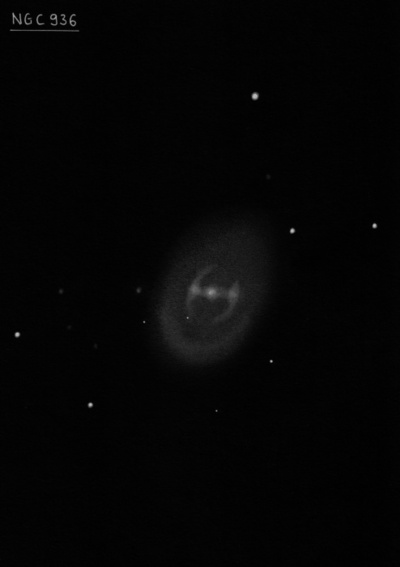
William Herschel discovered NGC 936 = H IV-23 = h223, along with NGC 941, on 6 Jan 1785 (sweep 351) and logged "cB, a very bright nucleus with a chevelure of 3 or 4' diameter." He placed this nebula in the fourth class, which included planetary nebulae as well as stars with burs, with milky chevelure, with short rays, remarkable shapes, etc. On 24 Nov 1827 (sweep 108), John Herschel logged it as "vB; vL; R; psmbM; 2' diame; fades away insensibly."
Based on photographs taken at the Helwan Observatory in Egypt, it was described in 1921 as "4'x3', E145°, vB almost stellar nucleus; a Phi-type spiral with pB cross-arms in p.a. 80° and 1.5' long, surrounded by a vF oval haze showing no structure.
200/250mm - 8" (1/1/84): bright, moderately large, very bright core, oval NW-SE. Forms a pair with NGC 941 12' E.
400/500mm - 17.5" (12/4/93): bright, fairly large, very bright core 30"x20" elongated E-W (bar), core increases to almost stellar nucleus. The much larger fainter halo extends up to 3.0'x1.5'. Three mag 9 stars lie N; mag 8.7 SAO 129912 8' NNW, mag 9 SAO 12911 12' NNW, mag 9.5 12' N. Forms a wide pair with NGC 941 12.5' E and UGC 1945 is 14' SE.
Notes by Steve Gottlieb